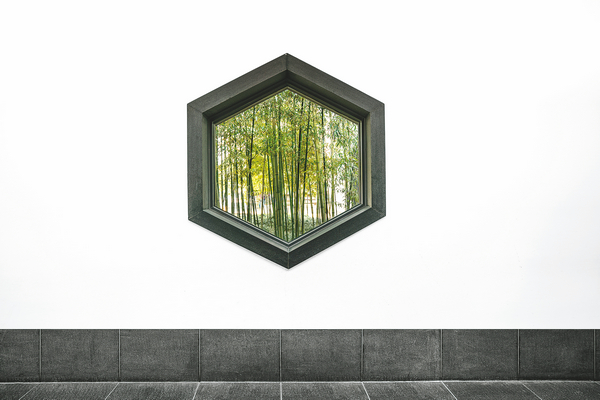

The museum officially opened in 2014 and gained wide acclaim for its redbrick buildings, where some contemporary works of homegrown and internationally renowned artists have been exhibited. Also, it owns an elegant garden, featuring gray bricks, paths, lakes, bridges and vines, and has become a popular spot for hanging out and taking photos among younger visitors.
The design of the Red Brick Art Museum reflects an ideal traditional lifestyle that people can be embraced by nature. But Dong says it doesn't mean to live in a real natural environment, which may have difficulties and cause discomfort, but it is to create a garden, a spiritual haven at one's home where one feels the presence of nature and meanwhile enjoys activities in different daily scenarios, keeping the urban hustle just outside the walls.
Dong says Chinese gardens show an important cultural idea-to explore the essence of details, "the kinds of trees to plant, the shapes of rocks and the way to arrange them, all efforts are being made to achieve a goal, to present a landscape", and ultimately to reveal the expansiveness of the universe.
Dong says the red-brick building allows people to "spend the time leisurely, free from anxieties of achieving efficiency in modern society", and when they have fun in the garden, they feel the same aimlessness, a carefree lifestyle, and stay close to nature as figures depicted in classical Chinese landscape paintings.
He says he wants visitors to feel the passing of time, "for example the rocks in the pools, after being washed by water and rain, will assume varying shades of color; and once I stopped gardeners trimming the vines of plants so that they would expand to both sides of the wall". Like landscape paintings, Chinese gardens have multiple highlights and perspectives, and "visitors inside will find delight in every corner and at every moment".
Yan Shijie, the founder of the Red Brick Art Museum and an art collector, views the space as one that connects the past and present, the East and the West, filled with stories about art, life and Eastern cultural spirit-"the best way for the public to accept contemporary art in a subtle, delicate manner".
Beijing-born artist Shao Fan is one of those, who, when choosing to live in a spacious courtyard rather than a storied apartment, turned the residence into a space imbued with classical architectural elements. By doing so, he has gained a close association with the simple, elegant lifestyle of ancient scholars and their spiritual world of richness.
Shao paints and designs furniture and gardens, for both himself and others. He held a solo exhibition at Suzhou Museum in 2019, showcasing ink paintings, installations and future designs in which one would feel like one is entering the slowly-paced, cultural world of ancient Chinese.
Shao has decorated his home and studio in Beijing's northeastern suburbs with antiquities. He has filled his courtyards with lush plants and trees that are carefully tended, and in one of those booming gardens he has designed a pavilion in the style of Chinese gardens, on rocks rising above the ground, to offer an overlooking view. Simply put, he has created a miniature landscape at his home.